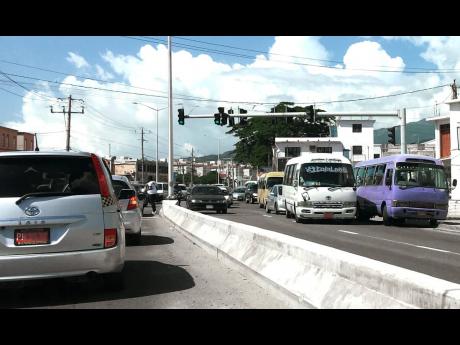Editorial | Back to a transport policy
Daryl Vaz’s suggestion that a portion of the fines the Government collects from traffic tickets be used to fund an ongoing road-safety campaign is, on its face, a worthy idea.
However, while educating Jamaicans about how to use the roads safely will have positive returns, a sustained reduction of the annual carnage from traffic collisions demands two other components.
The easy one is the robust enforcement of the rules and regulations on road use.
The second, and far more complex, pillar of road safety is a multilayered transportation policy, which this newspaper has consistently demanded, without success, from Mr Vaz, the transport minister, his recent predecessors, as well as from the Opposition’s shadow minister, Mikael Phillips. Hopefully, Messrs Vaz and Phillips are giving attention to this matter, which requires more than attempting to get more buses and taxis on the roads or coaxing public-transport operators to abide by even a modicum of the regulations.
Mr Vaz is rightly exercised by the number of Jamaicans killed in traffic collisions each year – 425 in 2023. While that was a 13 per cent decline on the figures for the previous two years, traffic deaths returned to an upward trajectory in the 2010s after declines in the period heading into and during the earlier years of the new century.
Jamaica’s traffic analysts project that traffic-related deaths this year will be similar to 2023.
SOCIAL AND ECONOMIC COSTS
These deaths and injuries come with a high social and economic cost.
The great bulk of the victims are people in the 19 to 49 age group or people in or entering, the most productive periods of their lives. They often leave significant numbers of dependent family members.
There is no recent data on the estimated lifetime cost to Jamaica’s GDP from the loss of crash victims to the economy. In the early 2000s, however, the Government estimated that crashes cost the economy about US$518 million a year, or about one per cent of gross domestic product (GDP). Translated into today’s dollars, the US amount would be the equivalent of approximately J$81 billion.
Using 2014 data, a 2016 analysis by the group Violence Prevention Alliance estimated that it cost about $8 billion that year to treat crash victims in Jamaica’s hospitals. In 2014, three hundred and thirty-three people died in traffic crashes and more than 13,000 were injured.
This is part of the backdrop to which Mr Vaz said he would take to the Cabinet his proposal that up to a quarter of the money from traffic tickets go to the transport ministry to fund public education around road safety.
According to the minister, up to June this year, more than $600 million was collected from traffic tickets, with a projected take of $1.4 billion over the fiscal year. That would give the transport ministry $350 million for its project.
However, the Government’s revenue estimates for the current fiscal year projects that it will earn $185 million from traffic fines, which is 69 per cent less than what Mr Vaz gave as the take for only the first six months of the calendar year.
Those are details that do not affect the fundamental merit of the minister’s suggestion. Saving lives is an important mission.
NUMBER OF VEHICLES
But driver, or even pedestrian, indiscipline is not the only problem on Jamaica’s roads. Their shortcomings are exacerbated by the number of vehicles on the roads (over half a million and rising); the state of the roads themselves (mostly bad); where communities are located in relation to where people work and recreate; and people’s frustration at spending long hours in traffic gridlock while losing hundreds of millions of potentially productive man-hours. All of this sits upon a poor and inefficient public-transport system that drives more citizens in search of their own solutions.
The upshot: people want their own vehicles.
So in 2023, Jamaicans spent US$417 million ($65 billion) importing vehicles, plus US$160 million ($25 billion) on spare parts. It cost another US$200 million ($31 billion) to fuel the island’s vehicles.
An appropriate transport policy must interrogate how that $121 billion a year could be more efficiently spent, helping to produce a more productive economy while enhancing the well-being of commuters.
That requires Mr Vaz not only to address the issue of a rational, appropriately priced and integrated mass-transit system, but he must also ask pertinent questions about policies that cover private-vehicle ownership, the cost of operating private vehicles, and where and when they can be driven.
He must also engage his fellow ministers, technocrats, and stakeholders on where communities are established. That will be relevant to what kinds, and where roads are built, and how they integrate with how people would really wish to live. This, in turn, impacts the design of a mass-transit system.
Going this route will require significant trade-offs, which will have to be properly explained to stakeholders. If done properly, it will be worth it.

